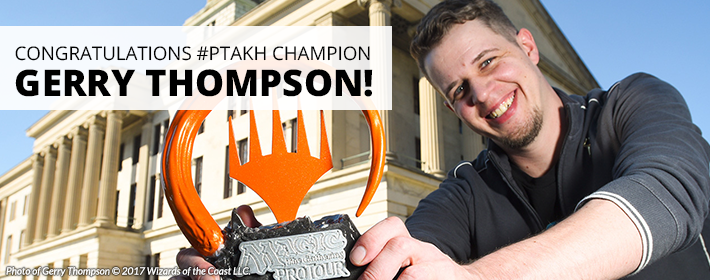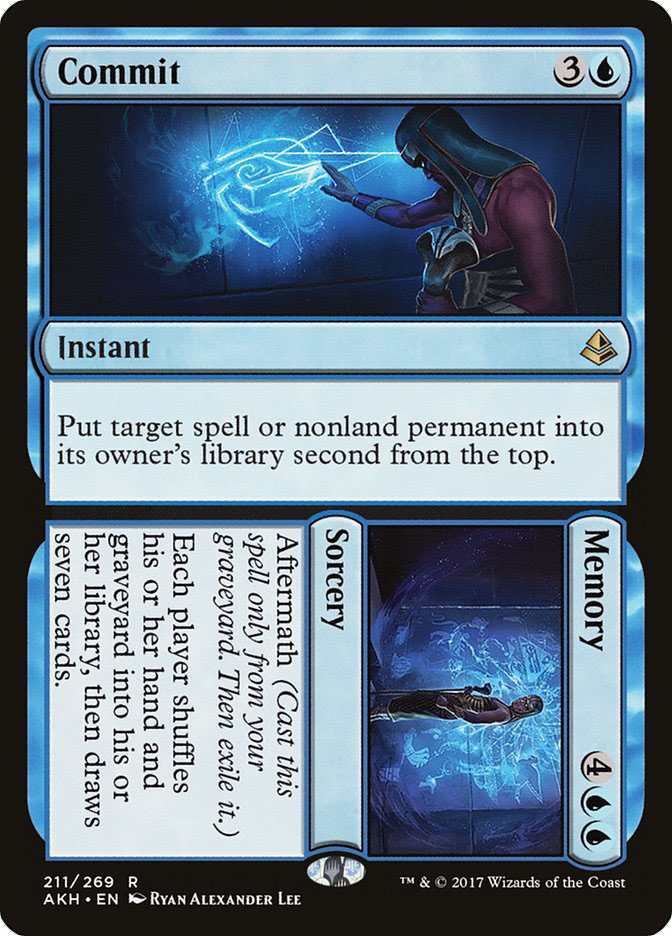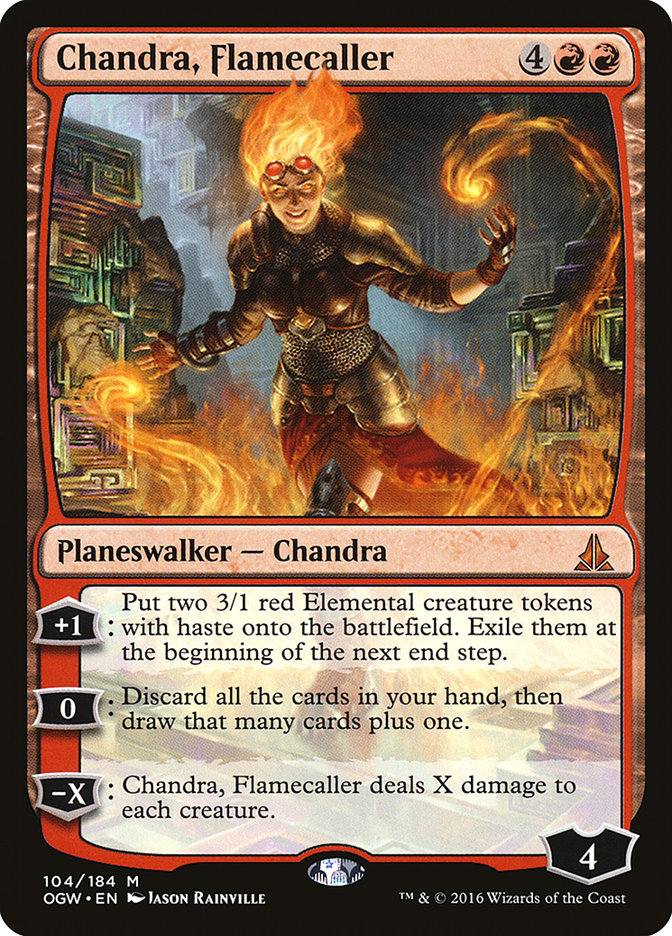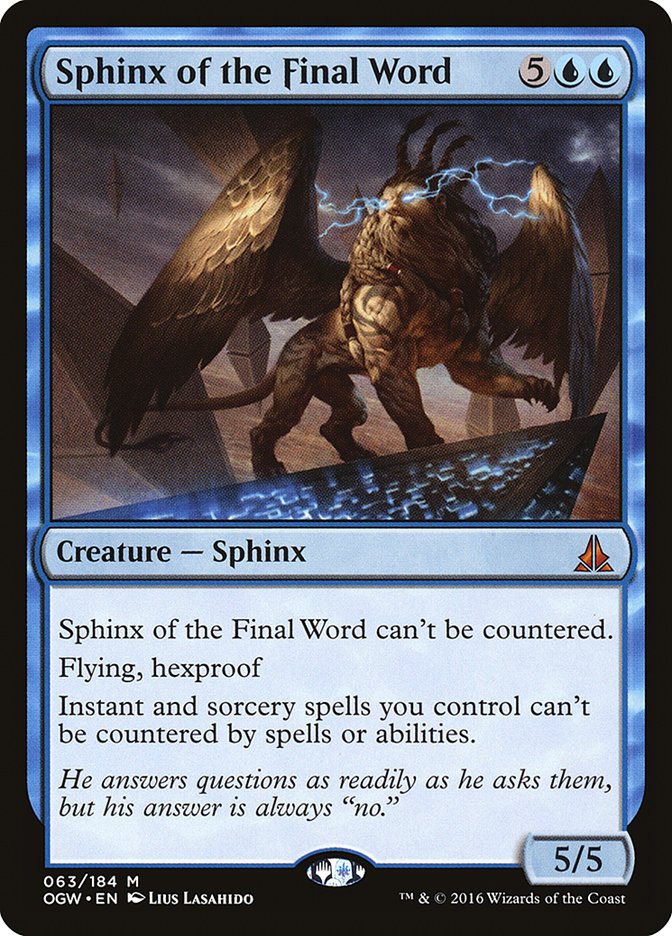It’s been a long and emotional week.
A good one, though.
Sometimes tournament Magic is all about doing your best to curb
expectations. For Pro Tours in particular, spending weeks of your time and
hundreds of dollars in preparation to participate in a singular event
against 400 other players who aren’t going to make any step of the way easy
can be an overwhelming experience. The realization that you can prepare
well and simply have a few bad days is a tough pill to swallow.
Other times the tournaments simply blend together. Each round just
represents a clock ticking down until you can leave, and each loss only
means a potential pro point lost. The travel is grueling, knowing that you
must attend every tournament lest you end up barely short a status six
months later. For me especially, the line between discipline and apathy has
always been tricky.
On rare and special occasions though, we’re granted true perspective. How
incredible the game and the people involved in it are. The ripple effect of
how much Magic has influenced our lives and established some of our
strongest relationships. That it’s all so important.
Maybe this realization hits us suddenly at an inopportune time (say, while
at a karaoke bar), but beauty should be embraced in any setting.
I was alive for top 8 until about 7 PM on Saturday. I was the only 11-5
player to make the top 16, after a murderer’s row tournament including five
of the eventual top 8 competitors. Genesis killed it, putting up (I
believe) both the highest Constructed deck and Limited win rate.
Eventually, because it’s my job and likely why you clicked on this article,
I’m going to talk about our deck and its innovation, but for at least
another mouse scroll or two, none of this paragraph matters.
One of my best friends won the Pro Tour.

Gerry Thompson has been by far one of the most influential people in my
life over the last few years and I couldn’t be happier for him.
I first met him briefly the Sunday of Pro Tour Magic 2015, after
my first real professional season ended. I missed Platinum by inches and he
commiserated with me, having experienced a similar situation the previous
year.
A short while later he talked to me on the phone for about an hour one day,
chatting about Magic and life. He went out of his way to help a kid he
barely knew.
A few months after that we played at Grand Prix New Jersey (where he got
that damn extra point in with a Delver of Secrets that he loves to hang
over my head) and after the tournament he encouraged me to get my
[redacted] together and start writing. He basically waved Cedric Philips
over and told him to give me a shot.
He’s one of the first in a long line to vouch for me. If you’ve enjoyed my
content in any capacity over the last several years you have, in part,
Gerry to thank.
The rest of our relationship is more public. We’ve been playtest partners,
worked together for Pro Tours, and brewed decks. As you’re likely aware, we
do a (mostly) weekly podcast.
I’ve been reading his articles for years even before meeting him, just like
you have. His contributions to both the Magic community and to my life are
numerous.
I can’t picture a more deserving champion, and I’ll always remember Pro
Tour Amonkhet fondly.
Preparation
Testing for this Pro Tour was more-or-less a tale in two parts. I didn’t
really play that many games this time around, but I watched a lot of Magic.
With the Pro Tour in Nashville, we arranged to rent a house in downtown
Roanoke and have the European contingent stay there, then the locals would
be in charge of driving everyone to the Grand Prix in Richmond and then
Nashville the following week.
Further, Amonkhet released on Magic Online far sooner than normal,
the Monday before release. What this culminated in was a particular Chris
Larsen sleeping on my couch for four days prior to everyone else’s arrival
doing not much else than trying to score more Draft trophies than Martin
Dang. While Chris may have had to whip out his credit card a few times over
the course of his (around) 70 draft binge, I did nothing but profit.
When Felidar Guardian was emergency banned, we fell into a pattern of
laptops side by side, where we discussed draft picks and (I) played whacky
Constructed decks.
My only real run of my usual attempt of trying to “break it” was this:
Creatures (4)
Lands (27)
Spells (29)
- 2 Kozilek's Return
- 3 Engulf the Shore
- 3 Pieces of the Puzzle
- 3 Splendid Reclamation
- 4 Contingency Plan
- 2 Glimmer of Genius
- 4 Censor
- 4 Commit
- 4 Haze of Pollen
Sideboard

When an effect as unique and powerful as Memory is available in Standard,
it fundamentally changes the way that you can build decks. Having access to
a Time Spiral effect that you can “Flashback” means that self-milling is
suddenly a valid way to build a deck. In conjunction with Torrential
Gearhulk, Memory feels precisely like a Time Spiral when you can do it on
an opponent’s end step.
Essentially the deck seeks to generate a massive mana advantage with
Splendid Reclamation and your cards that dig aggressively – Contingency
Plan and Pieces of the Puzzle while buying time with Haze of Pollen and
Engulf the Shore. Once you’re “set up” it’s pretty difficult to lose your
hold on the game – Memory allows you to keep gassing back up in a deck
that’s suddenly devoid of lands, and you can keep manipulating the
battlefield and even “loop” Eldrazi as you see fit with Engulf once you’ve
established a critical mass of lands.
The deck has a lot of potential – it simply suffers from a small fail rate
and you’re admittedly going through a lot more work than simply curving
into an Aetherworks Marvel on turn 4.
On the other hand, its matchup against Zombies is likely to be excellent.
When I was playing with it the most, the online metagame was heavily Mardu
(slightly ahead), Aetherworks (slightly unfavored), and blue control decks
(bad, but got better with this version).
Together, Chris and I collectively burned a stack of tickets and learned
quite a bit about the skeleton of Amonkhet Constructed and Draft,
some of which by osmosis.
Richmond was a successful tournament, and it’s not too much surprise that
Martin Dang and BBD reached the top 8, as they had drafted the most while
Chris was on the outside looking in with some unfortunate draws with a
great deck.
Brief Limited Aside
Genesis had an amazing Limited record with five 5-1s and a 3-3. Martin
Muller beat me in the last round of our draft to deny a 6-0.
My personal strategy was pretty simple. White and Red are the best colors,
and I feel comfortable cutting either of those colors hard as they lead
into the deepest archetypes. I wanted to avoid Green as much as possible as
I felt B/G was the hardest deck to build properly without uncommons and
rares while U/G was the most incoherent archetype.
Essentially I stack ranked the color combinations approximately as such:
W/U
W/R
R/B
R/U
W/G
U/B
R/G
W/B
B/G
U/G
I drafted almost mono-white splashing blue and R/B at the Pro Tour. Amonkhet is basically about aggression or not getting run over and
setting up your deck to grind properly. It’s classic Magic where building
coherent archetypes and understanding how they function is far more
important than individual card quality.
Leaving Richmond and Chandra Temur
On our last day of Constructed before heading to the Grand Prix, it became
pretty clear to us that Marvel was “the best deck.” It had broken free
wins, the ability to play a normalized game, and was resilient to sideboard
hate. The question was how to build the best version.
At some point after Atlanta, I finally got around to building Zombies just
to “do my homework.” Well, as we now know, the deck is very good. It didn’t
take long for it to start exploding on Magic Online as well, and it quickly
became a large target for the Pro Tour.
Enter Chandra, Flamecaller.
I was testing a build of Naya Aetherworks that utilized Vessel of Nascency
and Angel of Sanctions with Chandra as a sideboard plan against Zombies.
This was all effective, but Vessel still sucked overall in a world where
it’s not Dark Ritual for Emrakul, the Promised End.
Sunday night a group of us decided to leave the Grand Prix before the top 8
to get another night of Constructed testing before leaving for Nashville.
So at about 10 pm that night, Muller and I sat down to build the deck that
would be less than ten cards away from the deck he took to his second PT
top 8:
Creatures (15)
Planeswalkers (4)
Lands (23)
Spells (18)
- 4 Aetherworks Marvel
- 4 Woodweaver's Puzzleknot
- 4 Harnessed Lightning
- 4 Attune with Aether
- 2 Aether Meltdown
Sideboard

His instincts were right, and Chandra plays out incredibly well in multiple
copies in Temur.
As of this writing, I believe that we are the only Marvel deck that
“actually” has a good matchup against Zombies.
Even that aside, Chandra just makes so much sense now that we aren’t dying
to infinite Cats. She is a high impact card that increases your threat
density when activating Marvel, but she is also incredibly reliable to cast
at six mana.
The play patterns are relatively simple. Games where you have Aetherworks
Marvel, she is a quality hit that can take over the game by recycling your
hand into more energy until you hit Ulamog, the Ceaseless Hunger.
Games where you don’t have Marvel, Whirler Virtuoso can play defense,
essentially time walking your opponent and keeping her alive while she
keeps 0’ing into more energy and eventually Marvel. All the while
discarding any Ulamogs that you have stuck in hand! Whirler’s third
toughness is also often key for sweeping your opponents wide board and
keeping the Thopter maker alive.
You’ve likely noticed I keep mentioning her 0 ability. Looking back on the
tournament, I think I plus ability’d my Chandra once, maybe actual zero
times. A high impact draw engine that can catch you up and build additional
battlefield presence is exactly what Temur needed.
Perhaps the best list moving forward is some kind of hybrid between Yuuya’s
spell-heavy version and our version of Chandra, but the point is that
Chandra is the real deal and is critical to beating Zombies.
Our only real miss was our last minute addition of Sphinx of the Final
Word. We were pretty concerned about the U/R Control matchup, but not only
did the deck fail to show up in large numbers, but apparently it got beat
up by Marvel throughout the tournament anyway.
This seems to coincide with the historical notion that control decks are
just worse in early metagame tournaments. There’s simply a massive
advantage to being aware of all the cards in your opponent’s deck, even in
testing situations.
So did we break it?
Not really, but I do think we had an appreciable edge over the field. Our
Constructed deck was good and properly set up for the metagame that showed
up to the Pro Tour. Several of our guys properly figured out the Limited
format and did a great job of sharing that wealth of information with the
team as a whole.
Mardu didn’t dominate another tournament.
Gerry Thompson won the Pro Tour.
It was a good weekend.




